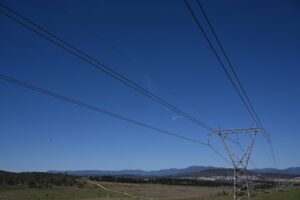The combination of falling demand, the rising threat of rooftop solar and the introduction of the carbon price have combined to reduce the output of Australia’s coal-fired power stations by 10 per cent.
Data provided by Pitt & Sherry’s montly Carbon Emissions Index (Cedex) says that the combined output for the Australia’s coal fired generation in the month of July was 1.4 terrawatt hours – 10 per cent below the level of the same month a year ago. And for the first time, the output of coal generation was lower in each of the four key states in the National Electricity Market – NSW, Queensland, Victoria and South Australia. (Victoria’s output was reduced by a mine failure at Yallourn, while the two largest coal fired stations in SA are now off-line).
The report said it is the largest monthly decrease in coal fired generation over the whole period covered by CEDEX, with the exception of two months at the end of 2010. The decrease in coal fired generation was larger than the decrease in total demand, and the difference was made up by increases in both gas and hydro generation. This in turn led to a much greater fall in emissions from Australia’s power sector.
“Demand for electricity supplied by NEM generators continued to fall, and the fall from June to July was steeper than seen in most, but not all, of the last eighteen months,” the report said. “This is not surprising. Business consumers (billed monthly) are only now receiving their first bills with a full billing period at the higher price, while residential consumers (billed quarterly) have some weeks still to wait for bills which have a majority of consumption at the higher price.
We asked Dr Hugh Saddler, who helped compile the report, if one swallow made a summer. “I wouldn’t want to make a guess on that,” he said. The report noted that brown coal generators retain their cost advantage over black coal generators in NSW and Queensland – hence their lower decline – because the latter are being squeezed by lower demand and higher fuel costs. The main threat to brown coal generation, as RenewEconomy has pointed out on many occasions, is not so much the carbon price, but falling demand and the growth in renewables, both large scale wind energy and rooftop solar.
Here are the key graphs:










